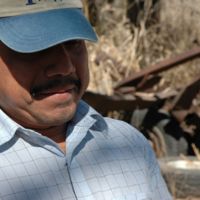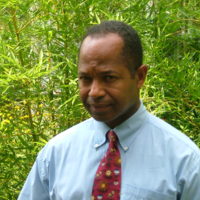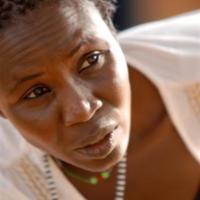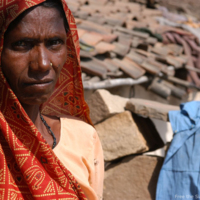
People use discomfort as an excuse to not get involved or to not discuss it, to not talk about it...You know we’re all individual and don’t butt into my business and those kinds of things…but, the people who are vulnerable, the people who need us to speak up, we can’t just keep walking past them every day and expect them to be okay. If we want to get to prevention we have to stop being passive by-standers in this.
[…]
People are shocked, super-shocked when you start talking about sex trafficking, especially when you start talking about in terms of children or people who were minors at one point in time being trafficked, and that by itself keeps people from talking….We need to be able to have those uncomfortable conversations…You know, to remove those barriers which is kind of what a stigma is, um, making it more upfront an issue instead of behind the scenes all the time. I think honestly, talking about it more is one of the best ways.
[…]
Helping kids especially understand you know who are the safe people in your life and what does a safe person look like…safe adults are people who are going to keep your confidence but also know to keep you safe, physically, emotionally, spiritually, sexually in all of those ways to keep you safe… if we are teaching our kids to recognize who those people are…if that’s been something historically for them or perhaps not – that safety isn’t a part of their vocabulary…So they need to be able to find a safe person that might not be a parent that they can talk to and confide in.
[…]
…and healthy relationships especially, healthy romantic relationships, what that looks like and you know how to handle like the peer pressure that comes along with breaking up with someone when you’re seeing all those red flags. We’ve seen it happen a lot, that kids stay with someone that’s not positive for them because their friends like them or their friends think that it’s so cool that they’re older or they have money or a car or whatever, and if they’re seeing red flags and they’re not feeling comfortable, they need to have that – they need to be empowered to say no and to step away from that relationship, even if it doesn’t necessarily lead to trafficking.
[…]
I think that those pieces are critical, whether that’s in health care, social services, juvenile justice, the education system, even transportation. I think really for me, that’s one of my biggest wishes, is that we have those pieces in place. Kids can’t protect themselves you know and if we really want to get to a place where we’re actually preventing it, we need to have adults in place who are trained and know what they’re doing and that we have a system with how to deal with that…there has to be a strategy. There has to be a plan, and people have to be trained in order to implement it and that’s the big thing for me, but then also just that the general public is aware.
[…]
…and I think that that’s really incredibly critical because the likelihood of one of them being able to come forward, and that mental block, that I can come forward and say, like, this person is forcing me to do this is much – it’s a lot more removed when they know across the board that they’re not going to be held legally responsible for that…because that’s one of the threats that we hear all the time. “Well, you’re prostituting yourself, so you’re going to go to jail.” And we see it happen, and we see it happen a lot…
[…]
I like those pieces…the Nordic type models [of prosecuting buyers] that you’re seeing, the buyers are the ones that get hit the most, um. Really it’s a business…It’s a business model though and if you don’t have that demand…the buyers are the ones that drive it and if they’re not doing that anymore, if it’s too risky for them, if it’s – if the cost is too much, then they’re going to find something else…We have to do something different and we already know that just going after the sellers in not going to work…As far as models go, I would say the Nordic model is probably one that’s captivated my attention and seems to be working.
[…]
If we’re ever going to get ahead of it, we have to stop making excuses for the buyer and maybe that’s something where first offense you’re on the registry for X number of years, and you can make that less of an issue or whatever if you do XYZ things, like the John school or something like that. That’s kind of been thrown around and I don’t really know the success rates of those things, but I can’t imagine that there wouldn’t be at least some success with the John school type of an idea… And it may not necessarily be something where they were intentionally seeking out a minor… just in those cases, I think that we should be able to then educate them, and some kind of therapy or something to kind of help process like what’s their thinking and help with those thinking errors, really and give that back to them…it’s not going to help if we continue to you know slap those things on people without giving them that extra piece -- addressing and assessing, you know, where are they going to go from there.
[…]
Honestly, there is no reason in my mind that those people who are charged and convicted with purchasing sex from a minor shouldn’t be on a registry. They need to be on a registry. If someone is in a position where they think that purchasing sex from a minor is a great idea, that person does not need to be walking around, hanging out with children in a job where they’re teaching children or something like that. That’s completely inappropriate and I don’t pretend to know the law or the ins and outs of the law. What I do know is that’s completely bogus that we don’t charge them that way and we don’t require them to be on a registry. They should be. It’s rape. I mean plain and simple and in any other situation, they would be on a registry, but because there’s an exchange of money, suddenly they’re not and to me, that sends an entirely wrong message to the seller, to the buyer and to the victim…
[…]
I think that we’re getting to a place where we are recognizing that one program can’t do everything, so that collaboration between programs is becoming so much more evident because one program can’t handle it all, and we shouldn’t expect them to, but being able to say okay, this is our specialty. This is your specialty. How can we work together to make sure that all the needs are being met?…so kind of just our biggest thing right now is just teaching everyone to work nice together, to play nice in the sandbox um and recognize that your organization does great work with this, so let’s help you with the bigger picture piece.
[…]
Honestly, the voices of the survivors get forgotten a lot, and we look to professionals in whatever industry we’re talking to, to answer the questions that they’ve never thought about asking….I honestly would look to have a survivor that’s trained and has a good support system in place to be in some kind of leadership in every part of the state….there’s a piece that gets missed a lot, that even though professionals might know certain things more, there’s some things that they don’t know and that’s okay, but let’s include the people who do know…we need to be more welcome to say something and to be listened to.
Narrative as found in Shireen S. Rajaram and Sriyani Tidball, “Nebraska Sex Trafficking Survivors Speak —A Qualitative Research Study,” Faculty Publications, College of Journalism & Mass Communications (2016)









